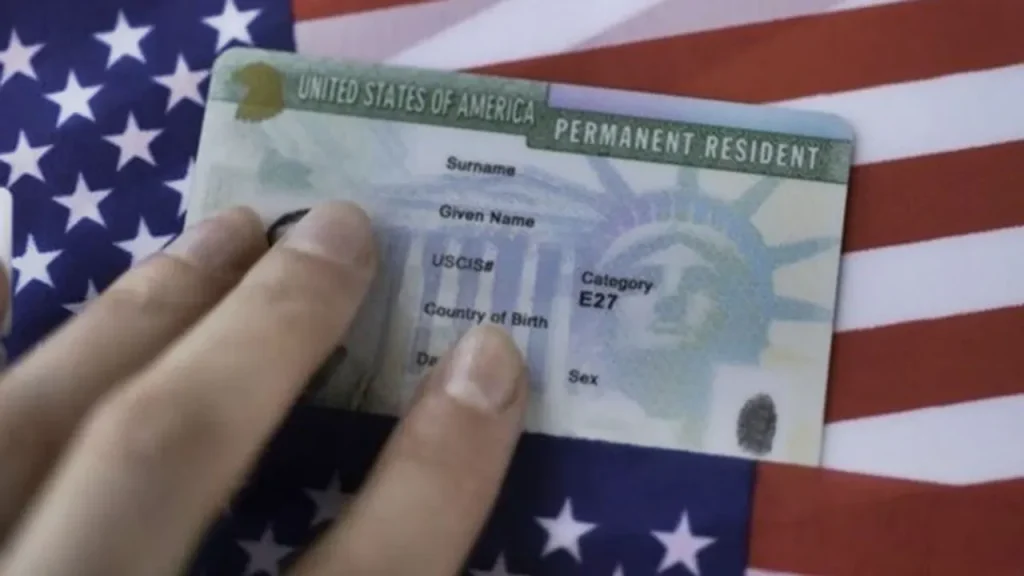How to Obtain a Residence Permit in the United States: A Comprehensive Guide

The United States is one of the most sought-after countries in the world for living, working, and pursuing educational opportunities. With its robust economy, diverse culture, and countless prospects, it’s no wonder that many people wish to relocate to America. If you are considering making the U.S. your home, obtaining a residence permit is a crucial step. This guide provides a detailed overview of the various pathways to acquiring residency in the United States, from applying for a Green Card to other visa options. We will break down each method thoroughly so you can determine the best way forward for your unique situation.
What is a U.S. Residence Permit?
A U.S. residence permit, commonly referred to as a Green Card, is a document that allows foreign nationals to live and work legally in the United States. This permit provides holders with the right to reside permanently in the U.S. and to access the many benefits the country has to offer, such as educational opportunities, healthcare, and the ability to eventually apply for U.S. citizenship.
There are several ways to obtain a residence permit, such as through employment, family connections, investment, or humanitarian reasons. The primary pathways include temporary residency (nonimmigrant visa) and permanent residency (Green Card). Temporary visas allow you to stay in the U.S. for a defined period, while the Green Card offers permanent residency.
Temporary vs. Permanent Residency
- Temporary Residency (Nonimmigrant Visa): This type of visa grants individuals permission to stay in the U.S. for a limited duration for specific purposes, such as work, study, or travel. Temporary visas often have strict conditions and time limits.
- Permanent Residency (Green Card): A Green Card allows individuals to reside permanently in the U.S. without any time constraints. It offers numerous benefits, including the ability to work freely, travel internationally, and eventually apply for citizenship.
What is a Green Card and How to Obtain It?

The Green Card is a vital document for anyone wishing to live and work in the United States on a long-term basis. It gives holders the right to permanently reside in the U.S., and it also paves the way to becoming a U.S. citizen. There are several routes to obtaining a Green Card, each with specific requirements and procedures. Let’s explore these methods in more detail.
Eligibility Criteria for Green Card Applications
To apply for a Green Card, you must meet certain eligibility requirements. Below are the primary ways individuals can apply for a Green Card:
- Family Sponsorship: This is one of the most common pathways. If you have an immediate family member who is a U.S. citizen or a permanent resident, they can sponsor your Green Card application. Eligible family members include spouses, children, parents, and siblings.
- Employment-Based Green Card: Professionals with specific skills or expertise can qualify for an employment-based Green Card. Companies in the U.S. may sponsor highly qualified workers to fill essential roles. There are several categories of employment-based Green Cards, including those for skilled workers, professionals, and investors.
- Special Immigrant Categories: Certain individuals may qualify for a Green Card under specific immigrant categories, such as religious workers, media professionals, or employees of international organizations.
- Refugee or Asylee Status: Individuals who have been granted refugee or asylum status may apply for a Green Card after residing in the U.S. for at least one year.
- Victims of Abuse or Crime: Victims of human trafficking, domestic abuse, or certain crimes may be eligible for a Green Card under special humanitarian provisions. These options aim to protect vulnerable groups and ensure that they receive the support they need to stay in the U.S.
If you do not meet the criteria above, you may still have the opportunity to obtain a Green Card by entering the Diversity Visa Lottery Program.
Green Card Lottery (Diversity Visa Lottery)
The U.S. government runs the Diversity Visa Lottery Program annually to promote diversity by offering Green Cards to individuals from countries with historically low rates of immigration to the United States. If you meet the basic requirements, such as being born in an eligible country and having a high school education or equivalent work experience, you can apply for this lottery.
Requirements for the Green Card Lottery
- Country of Birth: You must be born in a country that is eligible to participate. Some countries are excluded because of high levels of immigration to the U.S. in the past years, but citizens of Turkey are eligible to apply.
- Education/Work Experience: Applicants must have at least a high school diploma or two years of work experience within the last five years in an occupation requiring specialized training.
The application process for the lottery is free and can be done online. Winners are selected randomly, and those selected must go through a formal application process that involves submitting relevant documents and attending an interview at the U.S. embassy.
Green Card Application Process
Once eligibility is confirmed, applicants must follow specific steps to apply for a Green Card. Below is a summary of the Green Card application process:
- Filing the Petition: You will need to submit a petition (Form I-130 for family-based applicants or Form I-140 for employment-based applicants). This petition serves as your official request to apply for a Green Card.
- NVC Processing: The National Visa Center (NVC) processes the petition after approval, notifying you of the documents needed to complete your case.
- Interview at the Embassy: Applicants must attend an interview at the U.S. embassy in their home country. During the interview, they will be asked about their background and the purpose of their immigration.
Temporary Residency Options (Nonimmigrant Visas)
Temporary visas allow individuals to reside in the U.S. for specific purposes such as work, study, or business. Below are some common types of temporary residency visas:
- E1 and E2 Visas: These visas are for treaty traders and investors who meet specific investment criteria. Holders of these visas are typically only allowed to work for the business for which the visa was granted.
- H1-B Visa: This visa is for professionals in specialty occupations and requires at least a bachelor’s degree or its equivalent. It allows U.S. employers to hire foreign workers for specialized positions, such as IT, engineering, and healthcare.
The EB-5 Investor Visa
The EB-5 Immigrant Investor Program offers another path to obtain a Green Card by investing in the United States. Established in 1990, this program is aimed at foreign investors who are willing to invest a significant amount of money into the U.S. economy, creating jobs in the process.
EB-5 Visa Requirements
- Job Creation: The investment must create at least 10 full-time jobs for U.S. workers.
- Investment Amount: The minimum investment required is $1.8 million. However, if the investment is made in a targeted employment area (TEA), which includes rural areas or regions with high unemployment, the minimum investment is reduced to $900,000.
Can You Get Residency by Buying Property in the U.S.?
Buying property in the United States does not automatically grant residency. However, purchasing real estate can be a sound investment and a step towards spending extended periods in the U.S. Owning property could potentially strengthen your application for certain visas, but it does not directly lead to a Green Card or permanent residency.
Tips for Navigating the U.S. Residency Process
The process of acquiring residency in the United States can be complex and time-consuming. Below are some recommendations to help streamline the process:
- Determine Your Eligibility: The first step is to determine which residency option best suits your situation. Whether it’s through family, employment, or investment, each path has unique requirements.
- Gather All Required Documents: Ensure all necessary paperwork is in order, such as identification documents, educational certificates, and financial statements. Any missing or incorrect document can delay the process significantly.
- Seek Professional Help: Immigration law is intricate, and consulting a qualified immigration attorney can save time and reduce stress. An experienced lawyer can guide you through each step, ensuring your application is complete and meets all requirements.
Conclusion: Embarking on Your American Dream
Acquiring a U.S. residence permit is a significant endeavor that requires careful planning and thorough understanding of the options available. Whether you choose to apply for a Green Card through family, employment, or investment, or you aim to obtain a temporary residency visa, knowing the process and preparing adequately is key to success.
For those looking to take the next step, consulting an immigration attorney is highly recommended. They can provide personalized advice and assistance to ensure your application proceeds as smoothly as possible. If your goal is to live, work, or invest in the United States, taking the right steps today will bring you closer to achieving your American dream.
For more information and guidance, consider exploring other resources, such as:
- Guide to U.S. Citizenship: Learn about the steps and benefits of becoming a U.S. citizen after acquiring a Green Card.
- Employment Opportunities for Green Card Holders: Explore the range of job opportunities and industries open to Green Card holders in the United States.
If you’re considering making the U.S. your new home, take the time to explore all available options. The journey may be challenging, but with the right guidance and determination, it’s entirely possible to make your dream a reality.

